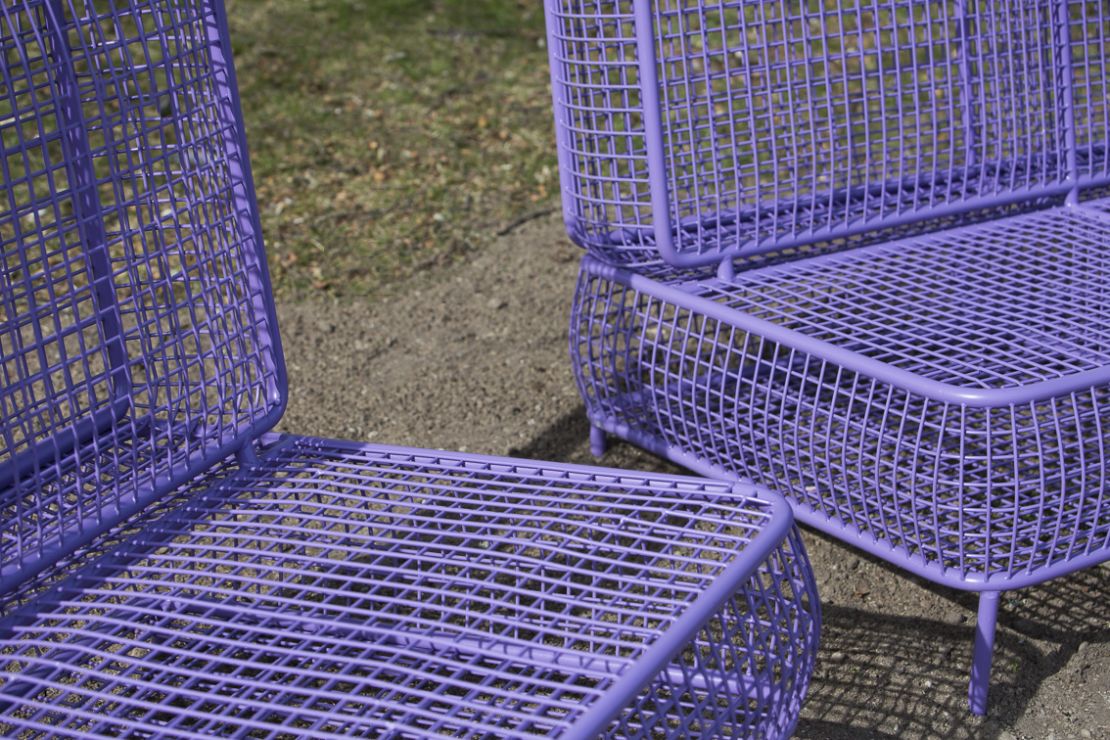The park bench is a familiar and often overlooked design that exists in cities across the world. Typically designed to have mass appeal, and manufactured from materials that can withstand frequent use, constant exposure to the elements and vandalism, these seats provide a valuable but perhaps unrecognized service.
As part of a development project aimed at revitalizing Stockholm’s J?rf?lla suburb, 10 leading international designers were invited to create alternative benches for the neighborhood’s neglected Kvarnbacken park. The outcomes of the Superbenches project challenge the conventional notion of public seating and vary drastically in their execution, ranging from playful outdoor lounge furniture to a curving mini amphitheater.
Superbenches forms part of a wider two-year research and communication initiative called Kalejdohill, which was launched by property developers HSB, Veidekke Bostad and Einar Mattsson to help reactivate Kvarnbacken park as an attractive meeting place for local residents.
Following an announcement that several hundred new homes will be built in the area, the developers invited curators Andreas Angelidakis and Mia Lundstrom to oversee a series of events and interventions to foster a sense of pride in the neighborhood. The project also encourages current residents to contribute ideas and suggestions that will ultimately help to shape the planning process.

New York-based creative director and writer Felix Burrichter was brought in to select the designers for the Superbenches installation, and set a brief that urged them to break away from preconceived notions of what a park bench should look like.
“I was hoping we would achieve a great variety of different benches and that’s certainly the case,” said Burrichter at the project’s launch. “Some of them aren’t even benches in the classic sense, but what many of them do is foster the community of the overall park, as well as creating moments of leisure and pleasure and different kinds of use.”
Burrichter also encouraged the designers to consider the idea of the folly – an architectural intervention created purely for decorative purposes – when coming up with their proposals for the benches. This inspiration is most evident in London-based designer Philippe Malouin’s brutalist-inflected cylindrical seating structure.
Architect Ifeanyi Oganwu and designer Naihan Li also created solutions with an architectural scale, while Max Lamb’s curving steel tubes utilize a typical urban material, and London studio Soft Baroque created an adult take on the playground springer.
Dutch studio Scholten & Baijings and LA-based designer Jonathan Olivares both sought to improve the park’s existing infrastructure, with the former applying colored gradients to the wooden seats and backs of five existing benches, and the latter placing a curving bench alongside a pair of renovated boules courts.
Appropriately for a project aimed at engaging with the local community, the inhabitants of J?rf?lla will be asked in a year’s time to decide which, if any, of the Superbenches they want to remain in the park. Feedback from residents at the opening event was predominantly positive, meaning these alternative benches might well become a permanent part of Kvarnbacken’s future.









